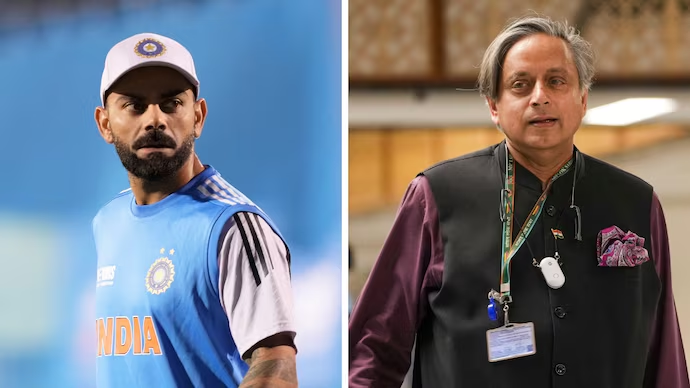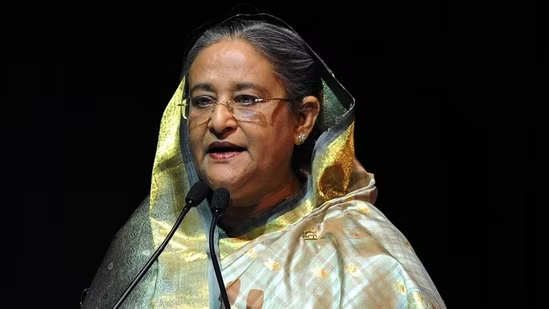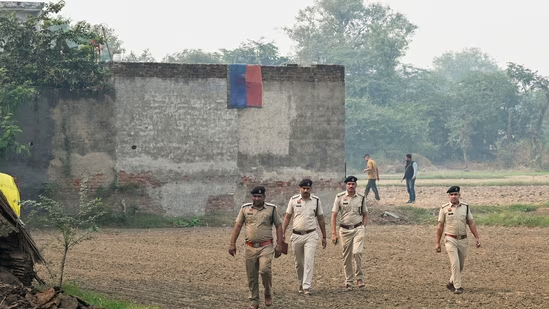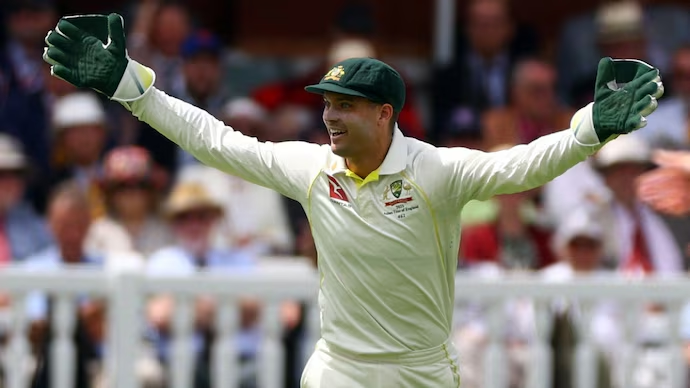In Short
- Virat Kohli retired from Test cricket weeks ahead of the England tour
- India are on the verge of losing the England series 1-3
- Despite sparks in batting, India have struggled to match England’s intensity
Shashi Tharoor, the wordsmith with a vocabulary so huge that he could write a new Thesaurus, wants to change the script of Indian cricket with a magnificent word: un-retire.
Indian cricket needs you, Virat Kohli, please come back, Tharoor wrote on X on Sunday. Tharoor’s cricketing cri de cur erupted on social media as India stumbled in England, reeling from a 195-run Joe Root-Harry Brook partnership and fielding gaffes like Mohammed Siraj’s boundary-line blunder. The partnership all but defenestrated India out of the series before the bowlers crept in through an opening provided by Jacob Bethell.
Absence makes the heart grow fonder, and Tharoor seems to be pining for Kohli’s return, invoking the spirit of the “60 overs of hell” that defined India’s iconic 2021 Lord’s Test triumph.
The problem, though, is that Kohli abruptly retired from Test cricket just before the England series. Kohli was keen for a new challenge, perhaps captaincy, to re-ignite his passion for the game. The selectors and coach Gautam Gambhir insisted that he play under a new captain. Unable to summon the motivation to continue playing, Kohli announced his exit.
Since the ruling dispensation and circumstances have not changed, despite mounting pressure from fans, Kohli’s return hinges on his personal conviction—a factor that even the most persuasive wordsmith may struggle to sway.
The Case For Kohli
India’s batting experiments in England reveal a lack of stability. Sai Sudarshan and Karun Nair, shuffled in and out of the No. 3 slot, have struggled to cement their places. Sudarshan’s technique against the moving ball has been exposed, raising doubts about his suitability for the top order. Unless he adapts swiftly, his tenure at No. 3 seems precarious. Nair’s comeback, while inspiring, has been fleeting. His inability to convert starts into big scores, coupled with his age, suggests the England tour may mark the end of his Test journey.
The Indian batting has done well in England, especially in the last two Tests. But it has relied heavily on Ravindra Jadeja and Washington Sundar, two all-rounders whose primary responsibility should be bowling. Because of the lack of spine in the middle order, India have compromised with the bowling, leaving out the attacking Kuldeep Yadav, and putting immense burden on its pacers, especially Siraj Ahmed. At Oval, the selection blunder was amplified by the team’s reluctance to bowl Jadeja and Washington, stretching the pacers beyond their limits. Fortunately, rain breaks helped India by letting the pacers rest their tired bodies for one more spirited assault.
In contrast, Kohli’s vast experience, particularly in England, made him a superior option. Despite recent form fluctuations in Australia, Kohli showed a willingness to address his weakness outside the off-stump, tailoring his game for English conditions. At 36, he was in his prime, deserving of further opportunities to anchor India’s batting.
Criticism of his recent failures was valid. Since 2021, Kohli’s average had fallen dramatically, and he was struggling to come up with big scores in Tests. But, his form in other forms of cricket—the recent Champions Trophy, for example—underlined his ability to perform on the big stage, and with the passion that has defined his career.
But, as the cliche goes, form is temporary, class is permanent. Kohli, it seemed, was just one great knock away from rediscovering his Test-match skills and temperament. But, the myopic BCCI, and the perennially insecure Gambhir created the circumstances for Kohli to walk out, his fire doused by their hubris and wranglings.
Beyond The Batting
Beyond his batting, Kohli’s absence as a leader and motivator has left India rudderless. His animated celebrations, in-your-face aggro that intimidates opposition, his regal swag, and the ability to rally crowds with the sheer force of his personality have galvanised India often, lifting the spirits of his men like the Spartan King Leonidas.
Anecdotes from his career paint a vivid picture. In the 2018 England tour, with India trailing, Kohli’s 149 in Edgbaston—scored under pressure with a back injury—rallied the team, nearly snatching victory. In 2021 at Lord’s, Kohli’s fiery exchanges with England’s tailenders sparked India’s bowlers to deliver the “60 overs of hell,” securing a famous win.
Kohli’s ability to read the game, and his inputs on bowling and fielding changes have been missed. In the Root-Brook partnership, India’s captain Shubman Gill appeared reactive, unable to disrupt the flow. Kohli, with his knack for breaking partnerships through sheer will, might have altered the narrative, much as he did in 2021 by unsettling England’s batsmen with relentless pressure.
The absence of the Kohli rule book was evident in the first two games when Gill seemed to feign aggression, a style that doesn’t suit the mild-mannered captain with the boyish face–a huge contrast to Rohit Sharma’s foul-mouthed feline ferocity and Kohli’s Viking warrior persona. Unfortunately, the adopted persona affected Gill’s performance, forcing him to revert to his natural self—a good decision.
Will The TRS Work?
Tharoor’s plea has reignited the debate for Kohli’s return. If cricket were a democracy, Kohli’s fans would have reacted to TRS–Tharoor Review System–and overturned the retirement decision. But, unlike politicians, cricketers do not change their stance easily.
Kohli’s retirement was a personal choice born of frustration. But the door remains ajar for a comeback if his passion can be reignited. As India navigates this transitional phase, the question lingers—can the BCCI and Gambhir create the conditions to lure back their talisman, or will Kohli’s Test legacy remain a tale of what might have been?
As fervent devotees of cricket’s hallowed pantheon, and ardent disciples of Tharoor’s sesquipedalian lexicon, we unleash a vociferous appeal: may Gambhir and the BCCI, in groveling genuflection, supplicate Kohli, the knight in shining armour, to redeem his squad. Let his soul, enkindled by ardor’s implacable clarion, avow an unwavering “I do” to the sport’s perennial apotheosis.






























